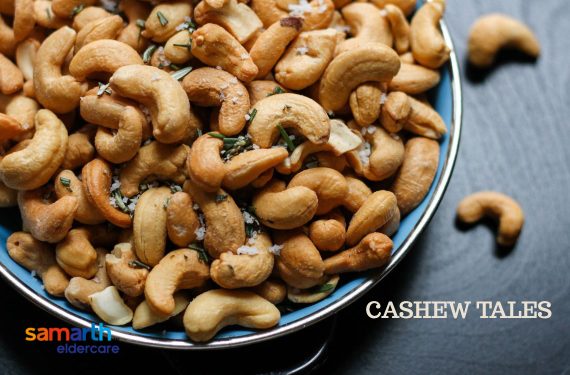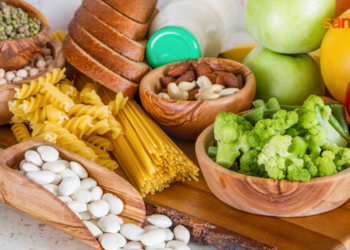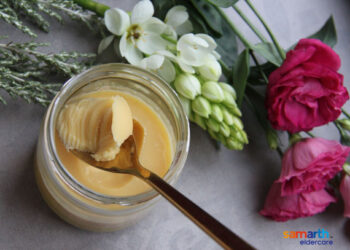One of the most popular sweets in India is Kaju Katli and cashews or Kaju happens to be a favourite nut too. Did you know by any chance that Kaju came from Caju, the Portuguese name for cashew? Indeed, it is the Portuguese who got the cashew to India. It is a native of Brazil, but today Vietnam is the largest producer of cashews, with India just behind. It is being produced in Maharashtra, Andhra, Orissa, Karnataka, Kerala, TN, Goa, and a few more states.
While many have eaten the cashew nut, very few may have eaten the cashew fruit or even know that it is edible. Cashew nuts are highly expensive and are mostly used in Indian sweets. It is also used as a snack in many households. Many people consider it as a calorie-rich food to be consumed minimally. But cashews have a good nutrition profile too.
Nutrition profile

Join Now >
Cashews do have a lot of calories; however, after extensive research, it is not believed that only a part of the calories contained in cashews is digestible by the human body. Besides, they are low on sugar, contain good fibre, and minerals like Iron, Magnesium, Calcium, Phosphorous, Copper, Potassium, Sodium, and Zinc. They also contain Vitamins B, E, and C and a bit of folate.
Rich in proteins, they help your body quickly pick up the tempo, say, after a workout. The antioxidants in Cashews help our body fight the free radicals and the unsaturated fats in them are good as well.
Why are they so expensive?
While we love the creamy, silky texture of the cashews and the crunchy taste, it remains one of the most expensive nuts. The reason partly is the extraction process which is still partly manual due to some difficulties. The fruit is either picked by hand or falls off when ripe. The grey colour nut is attached to the fruit and every fruit will only have one nut. This nut is separated from the fruit and processed to get the cashew nuts as we see them.
The cashew plant belongs to the family of poison ivy and the shell contains Anacardic acid from a compound called Urushiol, which is an irritant. It can cause blisters, burns, and even allergic reactions. Hence, the extraction process is rather tedious and parts of it are manual. The nut is separated from the shell by breaking it open which releases some acids. The cashew inside should not be broken in the process. They are then processed further to ensure all toxins are removed for safe consumption.
Health benefits
Cashews are said to be good for heart health! You probably head the opposite. Studies have revealed that the unsaturated fatty acids in cashews help lower bad cholesterol levels in the body, thus reducing the chances of heart issues. Also, cashews being rich in Magnesium, helps with metabolism and muscle relaxation. Cashews are a healthy snack that can help you maintain your weight.
The Copper and Calcium in cashews also help with bone health, reducing the risk of osteoporosis. The Magnesium helps with Calcium assimilation into the bone and Manganese works in tandem to prevent osteoporosis. Some studies have shown that cashew consumption helps people with Type 2 diabetes. It is because of the fibre and the type of fat, that ensures low sugar levels. A powerful antioxidant pigment called Zea Xanthin in cashew nut helps prevent age-related macular degeneration of the eye. Copper is helpful for brain health as well as building immunity.
Safe consumption
Cashews can be eaten as purchased as a healthy snack. They can also be roasted or fried as a salty snack. Dry, unsalted roasted nuts are the best for your health. In India, we use cashews in gravies, sweets, and more. Many sweet dishes are garnished with Kaju and Kishmish, the lovely mouth-watering combination.
Cashews are also used in Pulao and many rice dishes. The key is to remember that more of anything is not good for health. Hence, cashews need to be consumed in moderation only. One should not be consuming more than four to five cashews a day. It is best to mix it up with other nuts like almonds and walnuts for a healthy snack. They are to be avoided totally if you have nut allergies though.










